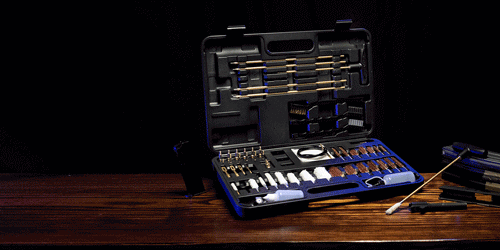Foreword
In the ever-evolving world of tactical gear, technology continues to enhance operational effectiveness, safety, and stealth. Among the critical features for tactical equipment, anti-thermal and NIR-compliant properties are two significant considerations, especially for professionals engaged in military, law enforcement, or hunting operations. But how do these two concepts relate, and why are they important in the context of tactical gear? This article will explore the relationship between anti-thermal and NIR-compliant materials, and why understanding their distinctions and synergies is vital for optimal performance.
What is Anti-Thermal Technology?
Anti-thermal technology refers to materials designed to minimize the heat signature of the wearer or the gear, making them less detectable by thermal imaging devices. Thermal imaging, which detects infrared radiation (heat), is widely used by both military and law enforcement agencies for surveillance and target acquisition. Traditional fabrics and materials emit heat in various forms, often making individuals or objects visible in thermal scopes or cameras.
Anti-thermal materials are engineered to absorb or deflect heat in such a way that the wearer remains largely invisible to thermal sensors. These materials can be incorporated into tactical vests, backpacks, jackets, and other gear. The goal is to prevent the heat from the wearer’s body, or the gear itself, from creating a distinctive signature that could be detected in the infrared spectrum.
What Does NIR-Compliant Mean?
NIR-compliant refers to materials that are specifically designed to operate within the Near Infrared (NIR) spectrum. NIR is a range of the electromagnetic spectrum just beyond visible light, and it plays a crucial role in camouflage and concealment technologies. Unlike thermal imagery, which focuses on heat detection, NIR sensors are more concerned with the reflection, absorption, and transmission of infrared light in a specific wavelength range (typically between 700 nm and 1400 nm).
NIR-compliant materials are designed to reflect NIR light in a way that reduces visibility to NIR sensors. This type of compliance is especially important for night operations, where NIR technology is often used for surveillance, target tracking, and other tactical purposes. For example, tactical vests and uniforms that are NIR-compliant prevent the wearer from standing out under NIR observation, ensuring stealth during operations.
The Relationship Between Anti-Thermal and NIR-Compliant Technologies
Though both anti-thermal and NIR-compliant materials are designed to enhance stealth, they focus on different aspects of visibility:
Anti-thermal technology primarily addresses the detection of heat signatures, while NIR-compliant technology is concerned with reducing visibility in the infrared spectrum.
Anti-thermal materials are crucial when facing thermal imaging systems, whereas NIR-compliant materials become essential when operating under night vision or other NIR-based technologies.
However, there is an important overlap between the two in modern tactical gear. For example, tactical vests or uniforms that are designed to be anti-thermal may also be manufactured to be NIR-compliant, ensuring that the wearer is invisible to both heat-detecting sensors and NIR surveillance devices.
In many advanced tactical vests, including those designed for military and law enforcement use, a combined anti-thermal and NIR-compliant approach is utilized to offer comprehensive protection against both types of detection. These vests are carefully engineered with materials that block both heat and infrared reflection, allowing the wearer to maintain stealth under a range of monitoring technologies.
Why Are These Technologies Important?
The growing sophistication of detection technologies has made it critical for tactical gear manufacturers to prioritize anti-thermal and NIR-compliant features. Here's why both are indispensable:
Enhanced Stealth: A combined anti-thermal and NIR-compliant vest or uniform allows the wearer to move through a variety of environments without being detected by heat sensors or infrared cameras.
Improved Operational Safety: In operations where stealth is essential, such as military reconnaissance, law enforcement stakeouts, or even hunting, reducing visibility to both thermal and NIR detection systems increases safety and mission success.
Adaptability to Modern Detection Systems: With advancements in surveillance technologies, such as thermal scopes, infrared cameras, and night vision goggles, tactical gear must be engineered to perform well in both the visible and infrared spectrums. This adaptability ensures that the wearer remains undetectable under different operational conditions.
Tactical Advantage: In combat or covert operations, being undetected can make the difference between life and death. Anti-thermal and NIR-compliant gear provide a significant tactical advantage by maintaining stealth even in the face of advanced surveillance technologies.
Conclusion
In modern tactical operations, stealth is paramount, and the relationship between anti-thermal and NIR-compliant technologies is fundamental to achieving that stealth. While anti-thermal technology minimizes the heat signature that can be detected by thermal sensors, NIR-compliant technology ensures invisibility in the near infrared spectrum used by night vision devices. Together, these features enhance the wearer’s ability to remain undetected, whether in daylight or under the cover of darkness.
For tactical gear manufacturers and users, understanding the relationship between these two technologies is essential for ensuring that their gear meets the demands of modern-day operations. Whether you're equipping a tactical vest or selecting hunting gear, considering both anti-thermal and NIR-compliant properties will help you stay hidden and enhance your operational effectiveness.
Shop Gloryfire NIR-Compliant Tactical Vest Now!






